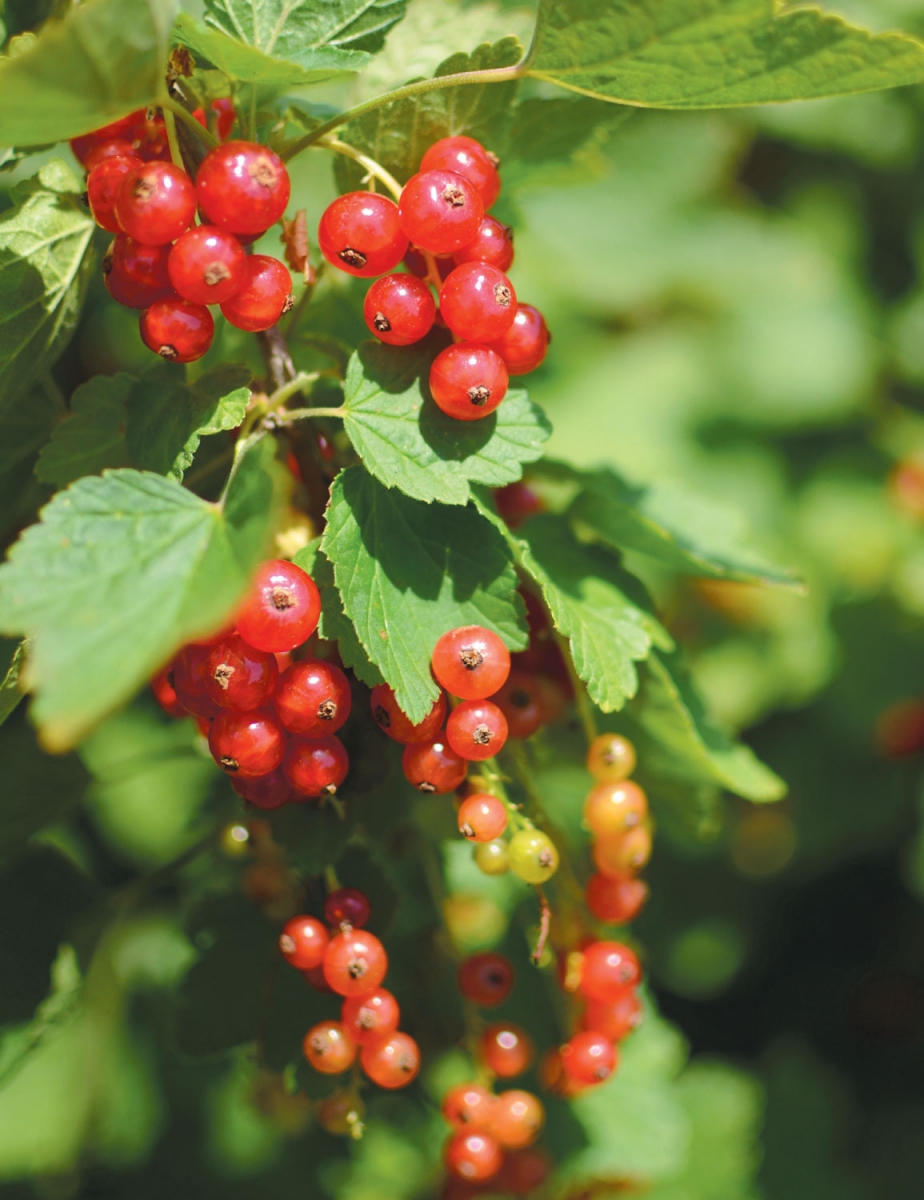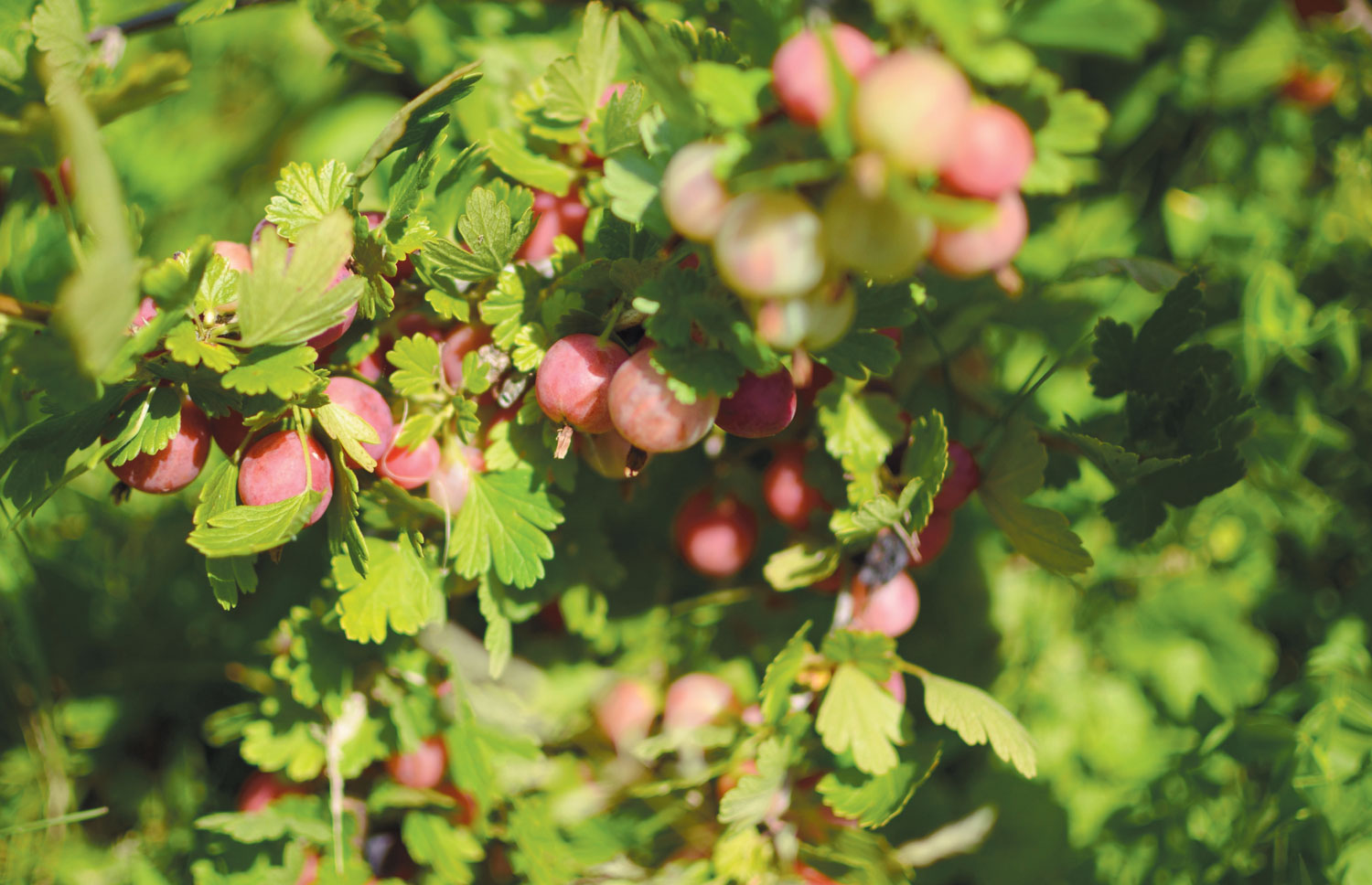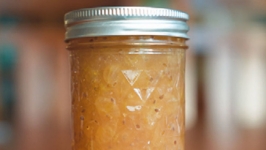Retro Fruit
Forgotten berries come back in style
FOR THE SHORT TIME they are in season, jewel-like red currants and pale green gooseberries are sure to catch the eyes of farmers’ market shoppers this summer. Though they make a pretty picture for Instagram, the truth is that few people know what these local fruits are or what to do with them. Currants and gooseberries are seriously tart—more like a lemon than a ripe strawberry— and you might guess that their sourness explains their lack of popularity in the US. While it’s true that as a country, we tend to have a collective sweet tooth, that’s not the reason these fruits are so uncommon.
Currants and gooseberries were banned in this country in 1911 because they were a carrier for blister rust, a fungus that threatened pine forests. The country was growing and we needed the lumber those forests provided. So currants and gooseberries were given the boot. In 1966, the national ban was lifted and regulation of the berries was turned over to the states. But many states maintained the ban in order to protect their pine forests.
In 2003, farmer Greg Quinn successfully lobbied to get the ban overturned in New York State, and other states followed his lead. Pennsylvania does still have a ban on the books, but the law is not enforced. Quinn’s eff orts led to a small-scale return of domestic commercial currant and gooseberry production. The berries could begin their big comeback. But it would be another seven years after Quinn started bringing them back that currants and gooseberries would begin popping up at farmers’ markets here.


In 2010, Ben Wenk of Three Springs Fruit Farm in Adams County, PA, made an initial planting of currants and gooseberries. One of the first in the region to invest in these long-neglected crops, he was partially inspired to take the leap thanks to a trip he’d taken to New Zealand with the Young Growers Alliance in 2008.
Seeing these berries growing as part of a large commercial operation half a world away made him wonder if they wouldn’t work closer to home. Around that same time, Adam Erace, co-owner of Green Aisle Grocery, urged him to get planting, saying his store’s customers would eat these specialty crops up.
When asked to think back on that decision, Wenk admits that he doesn’t recall agonizing over it. He only remembers the fun of planting these old, forgotten crops and the mystery of how his farmers’ market customers would react to them.
As someone who grew up in the US, reading children’s novels by British authors like Enid Blyton and Noel Streatfeild, in which glasses of black currant Ribena and dishes of gooseberry fool always seemed to feature, gooseberries and currants seemed impossibly exotic to me.
“A few times a season, we really make somebody’s day with the currants,” says Wenk. “Some folks get emotional and start telling us stories about their childhood.”

Currants growing at Three Springs Fruit Farm in Adams County, PA.
When Wenk started bringing his first half pints of currants and gooseberries to the Head-house Farmers’ Market, I was among the first to hand over my money. Since then, I’ve made many batches of gooseberry jam and currant jelly (the red and light pink currants both make gorgeous preserves). I promise, they are very worthy of the praise they command. Combined with a little sugar and just a bit of heat, you get flavors that are tart, complicated (much like a glass of wine but without any of the alcohol) and unlike any other summer fruit available in our region.
Three Springs Fruit Farm has been bringing currants and gooseberries to market for three seasons now, and they continue to grow in popularity. (Wenk has observed that Philadelphians seem to prefer gooseberries to currants). One of the things Wenk likes about selling at farmers’ markets is that if customers express interest, he can often offer them a small taste to help them decide whether they like it or not. He says, “While some people have a little aversion to tart things, most people who try a gooseberry find themselves picking up a half pint to take home.”
Because currants and gooseberries are so popular in other parts of the world, a taste at the farmers’ market can trigger beloved memories for folks who grew up elsewhere.
“A few times a season, we really make somebody’s day with the currants,” says Wenk. “Some folks get emotional and start telling us stories about their childhood. For someone in the hospitality industry—and I consider a farm at a farmers’ market to be just that— what an awesome experience to provide somebody.” It’s still too early to know if these time-consuming crops will turn a profit for the farm, but to Wenk these interactions with customers have a worth you can’t hang a dollar sign on.
This summer, if you find yourself picking up a pint of gooseberries, consider making a tiny batch of jam with them. The finished product vibrates with the tangy essence of gooseberry, and it’s the work of no more than an hour. And since the batch size is so small, there’s no need to bother with a boiling water bath. Just pour the finished jam into a jar or container, and once cooled, pop it into the fridge.






